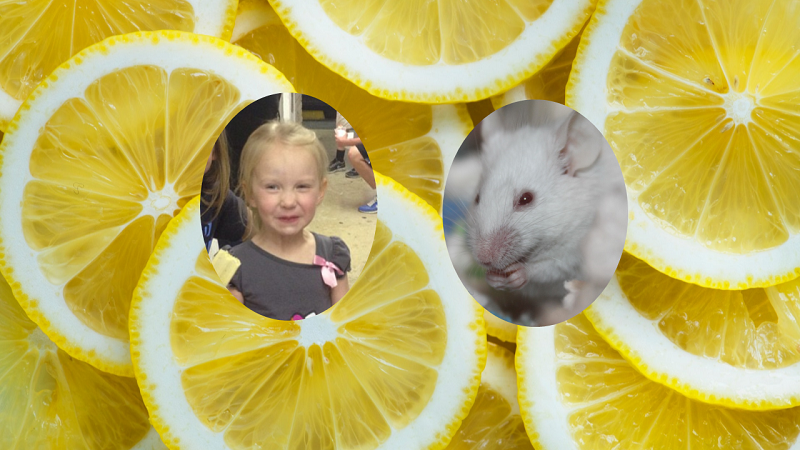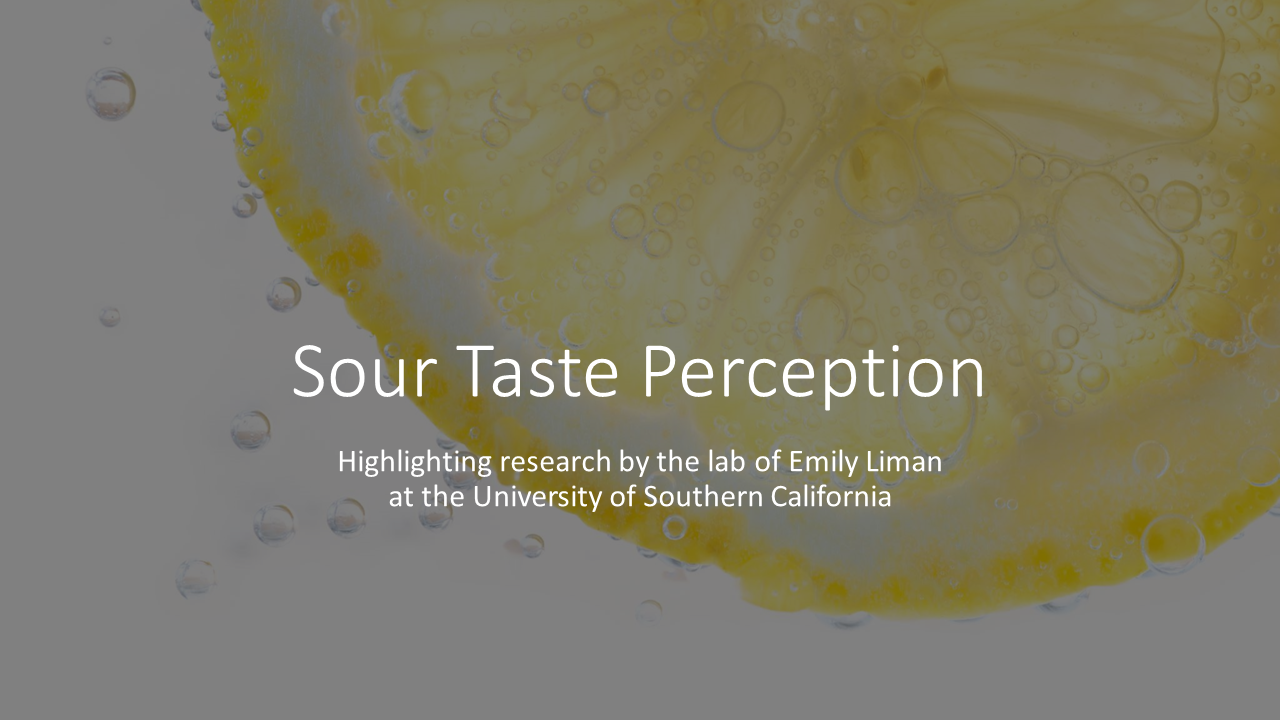The protein responsible for detecting sour in taste buds has been difficult to identify. This is partly because sour chemicals are detected both through the sense of taste (taste perception) and through the production of pain (somatosensory perception). Thus, mice lacking the taste pathway still avoid sour-tasting liquids.
The Liman lab has been studying sour taste for many years. In 2018, her lab identified a candidate sensor for sour tasting-chemicals, the protein otopetrin 1 (OTOP1). This year, her lab provided key evidence that OTOP1 is a critical sensor for the tongue to signal the brain about sour tastes.
Sour is one of 5 tastes. The receptors that bind chemicals for the other five tastes are all known. The receptor for sour-tasting chemicals has been elusive. Taste occurs when chemicals wash across specialized cells in the mouth and on the tongue. Taste buds contain different taste receptor cells that respond to the different chemicals and release neurotransmitters that activate special nerves, called gustatory nerves, to tell the brain whether the chemical has a bitter, sweet, umami, sour, or salty taste, or is a mixture of these. The proteins that sense the different tasting molecules are functionally and structurally diverse.
OTOP1 is a protein that forms an ion channel at the surface of the sour taste receptor cell in a taste bud. Ion channels pass positively or negatively charged atoms or molecules. OTOP1 is a proton channel, meaning that it passes H+ ions into the cell. This makes perfect sense for a sour taste sensor, because sour chemicals, foods, and drinks (like lemons, lemonade, or vinegar) are acidic. Acids are low pH, which means that they have high concentrations of protons.
The Liman lab determined that the sour taste receptor cells from mice without OTOP1 did not transport protons when exposed to acidic solutions and did not become excited enough to release neurotransmitters in response to acid solutions. When they placed sour solutions into the mouths of the OTOP1-knockout mice, the activity of the gustatory nerves was severely reduced. Thus, her lab has now definitively established OTOP1 as a sour sensor.
Highlighted Articles
B. Teng, C. E. Wilson, Y.-H. Tu, N. R. Joshi, S. C. Kinnamon, E. R. Liman, Cellular and Neural Responses to Sour Stimuli Require the Proton Channel Otop1. Current Biology 29, 3647-3656 (2019) DOI: https://doi.org/10.1016/j.cub.2019.08.077
Y. H. Tu, A. J. Cooper, B. Teng, R. B. Chang, D. J. Artiga, H. N. Turner, E. M. Mulhall, W. Ye, A. D. Smith, E. R. Liman, An Evolutionarily Conserved Gene Family Encodes Proton-Selective Ion Channels. Science 359, 1047-1050 (2018). DOI: 10.1126/science.aao3264
Lab
Liman Lab at USC Dornsife https://dornsife.usc.edu/limanlab/ (accessed 15 November 2019)
Cite as: N. R. Gough, Genetically Engineered Mice Reveal Mechanism of Sour Taste. BioSerendipity (15 November 2019) https://www.bioserendipity.com/genetically-engineered-mice-reveal-mechanism-of-sour-taste/


